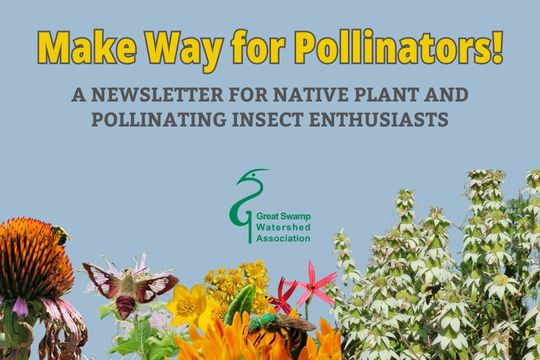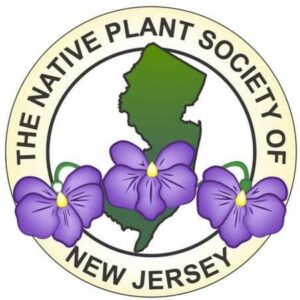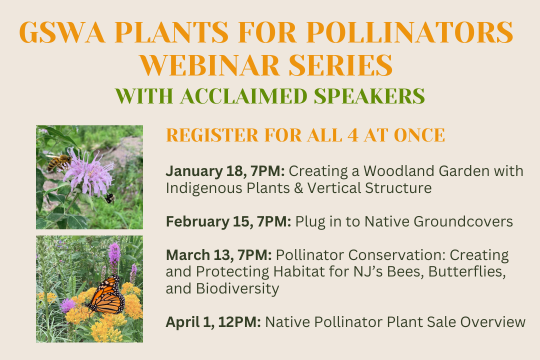Make Way for Pollinators, February 2024
Avoid Planting Invasive Plants!
We often hear about the importance of planting native plants, but it’s also critical to steer clear of planting invasive plants, and to actively remove them. Invasive plants are non-native plant species that grow aggressively and compete with native plants for water, light, nutrients, and space. Common plants like Japanese barberry, Bradford pear, and Asian wisterias that have escaped from our yards pose a threat to local biodiversity by outcompeting native plants and harming ecosystems.
One local example of this damage is right in our backyard. The Morristown Historical Park/Jockey Hollow National Park was recently classified to have a regeneration status of “imminent failure” * . This means the habitat will no longer be able to regenerate due to the abundance of invasive plants and deer that are killing trees and preventing regeneration. Unfortunately, this classification almost certainly applies to the many thousands of acres of public and private forests in NJ.
How does this happen? Invasive plant seeds are transported from our yards by wind, water, birds, and other wildlife unnoticed by us. Of the thousands of non-native ornamental species that have been introduced to New Jersey, only about 150 have aggressive growth traits that classify them as “invasive”. As they spread, invasives slowly cripple our natural areas by replacing native plants while failing to perform their complex and critical ecosystem roles.
Invasive species damage has increased significantly in the past 50 years due to land development, deer populations, and other stressors. Changes in climate, like shorter winters, enable some species to spread more successfully. The natural areas crucial for New Jersey’s climate adaptation, stormwater management, drinking water, recreation, and biodiversity are approaching a critical threshold where they can no longer sustain themselves.
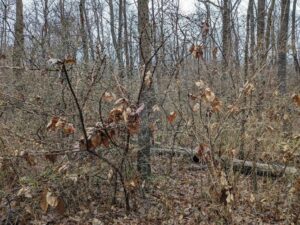

Jan 2024 photo: A dense thicket of burning bush and European privet have crowded out the native understory (including tree seedlings) in this area of Morris County’s Tourne Park.
Undoing this damage is challenging, but reducing the presence of invasive plants in our yards can slow the spread of established invasives and, more importantly, prevent emerging and potential invasive species from becoming widespread. You can find a list of invasive plant species on the NJ Invasive Species Strike Team (NJISST) Do Not Plant List 2023. The list categorizes each threatening species as widespread, emerging, or potential and is regularly updated by a professional committee.
GSWA, the Native Plant Society of NJ, and other sources can help you to select native plants to use instead of invasives. This NPSNJ Replacement Species Guide describes great replacements for eight common invasives. Please share it around.
Despite the challenges, there is hope. Studies indicate that native plant communities can recover if we reduce general stressors and limit the spread of invasive species.
Let’s collectively stop planting invasives in our landscapes now! Our New Jersey forests will be grateful.
The New Morris County Native Plant Society Chapter is our latest Plant Sale Community Partner!
The Native Plant Society of New Jersey (NPSNJ) is a powerful advocate for native plants. We are excited that the brand new Morris County NPSNJ Chapter has become our newest Plant Sale Partner, while the long-established Essex County NPSNJ Chapter is enjoying its 3rd year.
The Morris County Chapter of the Native Plant Society of NJ has officially launched and is ready for a 2024 full of native plant magic. Through education, creativity, and outreach, the Morris County chapter aims to inspire a passion for native plants. If you are a current NPSNJ member, you will automatically receive the Morris County newsletter on upcoming events and chapter meetings. If you’re not a member, please consider joining the NPSNJ on its mission to preserve New Jersey’s diverse native flora (and the life that depends on it!)
Importance of Graminoids to Ecological Gardening
Ecological gardening is a style of landscape management that reduces long-term costs and labor by creating a mostly self-sustaining ecosystem. The three overarching tenets are keeping the soil biologically alive, growing an array of native plants, and providing food and habitat for wildlife. Turning a barren lawn into a healthy ecosystem through ecological gardening relies heavily on graminoids.
The graminoid group consists of three families of herbaceous plants, grasses (Poeceae), sedges (Cyperaceae) and rushes (Juncaceae). They are distinguished with a simple rhyme: “sedges have edges, rushes are round, and grasses have nodes where leaves are found.” Rushes have round solid stems, and their fruit forms as unique capsules that break open to release their seeds. Sedges have solid stems with three distinct sides. Grasses have mostly hollow stems that bulge at the points where leaves connect.
Graminoids are found in wetlands across the US. Sedges and rushes evolved spongy tissue within their stems that provides air to their roots even in the muddiest soil. Their penchant for thriving in areas too waterlogged for other plants provides food and habitat for many birds and insects.
Because all graminoids fall within one of the two main classes of flowering plants, Monocotyledoneae, they also appeal to pollinators. It is a common misconception that grasses are only pollinated by the wind. Their flowers grow in structures called spikelets, and though they may not resemble common wildflowers, bees can pollinate them just as easily.
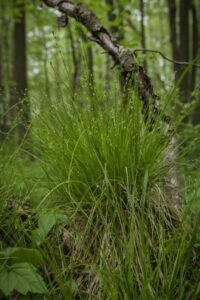

Figure 1: Curly Wood Sedge. Credit: Brett Whaley
Graminoids can increase your yard’s biodiversity above and below the soil by acting as green mulch, a densely-woven plant layer that covers the majority of the ground. It outclasses traditional mulch at keeping soil cool, moist and weed-free. Unlike wood chips or straw, green mulch does not need to be continuously purchased and reapplied each spring. These plants grow steadfast in the face of wind and water, protecting the soil from erosion.
To reap the maximum benefits from reintroducing graminoids to your yard, determine whether your
region is best-suited for warm-season or cool-season grasses. Cool-season grasses grow during the spring and fall. They prefer cooler temperatures and are hardy against frost and shade. Curly wood sedge (Carex rosea) is an example with understated beauty, sporting green star-shaped flower spikes in late spring.
Warm-season grasses grow during the summer. Compared to cool-season grasses, they have a higher light requirement and are sensitive to frost, but they have the added benefit of needing less water to grow. Broom sedge (Andropogon virginicus) reflects its love of sunshine in its yellow flowers from June through Sept and retains equally eye-catching coppery foliage with soft white hairs during the cooler months.
It is important to choose graminoid species that naturally occur in your region. Invasive and nonnative species tend to provide comparatively less shelter and food for wildlife. Heavy development in NJ makes our wetlands especially vulnerable to invasive species like the common reed (Phragmites australis). As urbanization progresses, taking steps at home to protect our native species becomes an increasingly urgent matter.
There is still time to register for our Plant for Pollinators Webinar Series!
Our Plant for Pollinators Webinar Series is going great, with over four hundred people signed up for our “Plug into Native Groundcovers” in February with John Courney from Kind Earth. We are at the halfway mark, with two webinars down and two more to go. In March, we have Kelly Gill, Pollinator Conservation Specialist from Xerces Society, discussing Pollinator Conservation and what home owners can do to create and protect pollinator habitats. And as always, we have our very own Hazel England on April 1st discussing our Native Plant Program and what species are available this year. To sign up, go to https://www.greatswamp.org/event/plants-for-pollinators-webinar-series/
